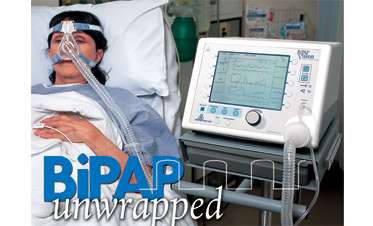Bipap vs. CPAP: Which Is the Best for Your Sleep Disorder?
When navigating the intricacies of sleep conditions, the option in between BiPAP and CPAP treatment is a vital consideration. While CPAP provides a constant air movement appropriate for obstructive sleep apnea, BiPAP's double stress setups might improve comfort for those with even more intricate respiratory problems.
Comprehending Sleep Disorders
Rest conditions encompass an array of conditions that interrupt regular sleep patterns, impacting both the top quality and period of rest. These conditions can show up in different types, including sleeping disorders, rest apnea, narcolepsy, restless leg disorder, and parasomnias. Each condition offers distinct difficulties, often causing significant daytime tiredness, cognitive impairment, and psychological disturbances.
Sleeping disorders is defined by trouble dropping or staying asleep, while rest apnea involves duplicated interruptions in breathing during sleep, typically causing fragmented rest. Narcolepsy, on the other hand, is noted by extreme daytime drowsiness and sudden rest assaults. Uneasy leg disorder triggers uncomfortable sensations in the legs, triggering an uncontrollable impulse to relocate them, which can additionally hinder the capacity to drop off to sleep.
The impact of sleep conditions prolongs beyond private health, affecting total productivity, relationships, and quality of life. Understanding the certain nature of each condition is vital for efficient medical diagnosis and therapy. As rest wellness becomes increasingly acknowledged as a vital component of total well-being, dealing with these disorders is important for boosting both rest high quality and everyday performance.
How CPAP Works
Continuous Favorable Airway Stress (CPAP) therapy is frequently utilized as a key treatment for obstructive rest apnea (OSA) The device of CPAP entails the use of an equipment that supplies a stable stream of air through a mask worn during rest. This air movement preserves favorable stress in the airway, stopping the collapse or blockage of the throat that can take place throughout rest.
When an individual inhales, the CPAP equipment provides a constant circulation of air, making certain that the airway remains open - BiPAP Rental. This not only alleviates the signs and symptoms of OSA, such as snoring and interrupted sleep patterns, but also decreases the connected health dangers, including cardiovascular problems and daytime fatigue
The pressure settings on a CPAP device can be personalized to meet specific person needs, typically figured out with a rest research. On the whole, CPAP treatment has been shown to considerably enhance the top quality of rest and total wellness for individuals enduring from obstructive rest apnea.
Exactly How BiPAP Works
BiPAP, or Bilevel Favorable Respiratory Tract Stress, is a specific form of non-invasive air flow that is specifically beneficial for individuals with conditions such as complex sleep apnea or respiratory system conditions. Unlike CPAP, which delivers a constant stream of air at a single stress, BiPAP supplies 2 unique stress settings: a higher inspiratory stress for inhalation and a lower expiratory stress for exhalation. This dual-pressure method enables less complicated breathing, decreasing the initiative called for during exhalation.
The device operates via a mask fitted over the nose or mouth, directory attached to a maker that creates air stress. When the person inhales, the device supplies the greater pressure to help with air movement, making certain that the airway remains open. Upon exhalation, the equipment automatically decreases the stress, making it extra comfy for the patient to breathe out.

Secret Distinctions Between BiPAP and CPAP

In comparison, BiPAP (Bilevel Favorable Air passage Stress) supplies two different stress settings: one for inhalation and a lower one for exhalation. This double pressure system enables more comfortable breathing, particularly for patients who have problem with breathing out versus a continuous stress. BiPAP is often suggested for individuals with complicated sleep apnea, chronic obstructive lung disease (COPD), or those who call for additional assistance during sleep.
Additionally, the complexity of BiPAP tools generally causes a higher expense and requires extra mindful titration than CPAP. BiPAP Rental. Understanding these essential differences can help in acknowledging which device may be more ideal for particular sleep disorders, establishing the groundwork for informed therapy decisions
Picking the Right Therapy
The choice between BiPAP and CPAP treatment largely pivots on the particular attributes of the rest problem, the patient's overall health, and their convenience with the gadget. CPAP, which provides a continual stream of air, is generally suggested for obstructive rest apnea (OSA)
Alternatively, BiPAP gives two levels of stress: one for inhalation and a reduced one for exhalation. This double pressure system is valuable for individuals with complex find here rest apnea or those who experience trouble exhaling versus a constant stress. Additionally, BiPAP is commonly advised for individuals with respiratory system conditions, such as chronic obstructive pulmonary illness (COPD), where differing pressure setups can boost convenience and compliance.
Inevitably, a detailed evaluation by a rest expert, consisting of a sleep research study, can help establish which treatment lines up best with the person's demands. Aspects such as convenience, convenience of use, and certain medical conditions need to likewise be thought about to enhance treatment results.
Verdict
In summary, both BiPAP and CPAP offer distinct objectives in the management of rest problems. CPAP works for obstructive rest apnea through consistent airflow, while BiPAP provides twin stress settings that improve comfort for those with complicated sleep apnea or respiratory system issues. The option between these therapies should be guided by individual requirements and conditions, demanding a detailed assessment by a rest expert to ensure optimal treatment end results and enhanced high quality of rest.

Generally, CPAP treatment has been shown to substantially boost the quality of rest and overall wellness for individuals enduring from obstructive sleep apnea.
BiPAP is commonly recommended for clients with intricate rest apnea, persistent obstructive pulmonary condition (COPD), or those that call for added assistance during rest.
CPAP is reliable for obstructive sleep apnea through constant air flow, while BiPAP provides double pressure setups that improve comfort for those with complicated rest apnea or breathing issues.
 Devin Ratray Then & Now!
Devin Ratray Then & Now! Alisan Porter Then & Now!
Alisan Porter Then & Now! Danica McKellar Then & Now!
Danica McKellar Then & Now! Matilda Ledger Then & Now!
Matilda Ledger Then & Now! Nancy Kerrigan Then & Now!
Nancy Kerrigan Then & Now!